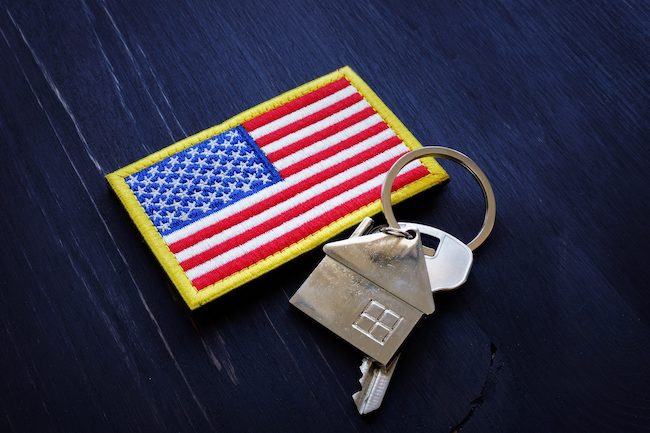
Conventional Loans vs. VA Loans
A mortgage is a loan given to a homebuyer through a bank or lender to purchase a home, and the repayment terms of most home loans are typically between 15 and 30 years. While there are many different types of mortgages out there, it’s important to understand the differences and the pros and cons of each loan so you can make the best decision for you and your family. To help understand the differences between one of the most common loan products, a conventional loan, and one of the most powerful and exclusive loan products, a VA Loan, we’ve broken them down below.
What are conventional loans?
Conventional Loans are loans that aren’t backed by a government agency but instead are originated and provided by financial institutions like a private mortgage lender or a bank. These loans don’t have the same perks as government guaranteed loans, but they are a great opportunity to become a homeowner, especially if you have a solid credit score and some money in savings. Since the Federal Government does not insure the loan, there is more risk for the bank or lender which is why most of the time, buyers are required to put down 20% at closing. Although a 20% down payment is common, you can typically get away with a lower down payment with the addition of PMI (private mortgage insurance).
What are VA Loans?
The VA Home Loan is one of the most powerful mortgage products available today. This loan is guaranteed by the United States Department of Veterans Affairs (VA) and is reserved exclusively for military members and veterans. Certain surviving spouses may also be eligible for a VA Loan. With amazing benefits ranging from a $0 down payment to no PMI, the VA Loan allows eligible service men or women, veterans, and some military spouses the opportunity to buy a home using advantages reserved exclusively for those serving or who have served in the military. Although the VA loan does not require PMI, most buyers will have to pay a small funding fee which can be rolled into the total loan or waived in certain circumstances like for veterans with a qualifying service-connected disability.
Main differences between the two loans
| VA Loan | Conventional Loan |
|---|---|
|
$0 down payment |
3% minimum down payment (PMI incurred on loans unless buyer puts 20% down) |
|
No minimum credit score required by the VA and relaxed requirements by lenders |
620 minimum credit score |
|
VA funding fee (typically between 1.25% and 3.6%) |
No PMI required up front, instead it is added to monthly fees until 20% of loan is paid |
|
Reserved exclusively for veterans, service members, and military families |
Great option for borrowers with good credit and a healthy savings |

Getting started
The process of getting started with a Conventional Loan and VA Loan are very similar. For both loans, you will need to prepare all necessary documents like pay stubs, tax returns, and proof of employment for a lender in order to get a pre-approval. That pre-approval will help you determine your buying power and then you can get started on the fun part, finding your home. If you have served in the US military or are currently serving and are interested in having a government insured loan that has a $0 down payment and no PMI, you’ll want to look into the VA Loan. In addition to your pre-approval, you’ll also need your Certificate of Eligibility (COE) to apply for a VA Loan. Your COE proves that you’re eligible to use the VA Loan benefits.
